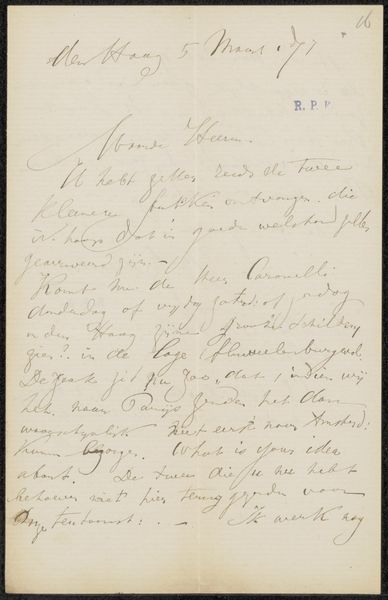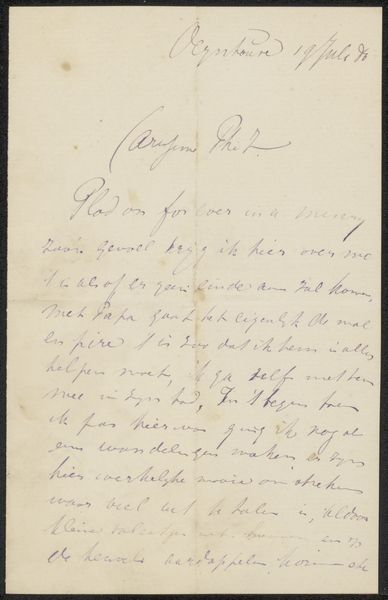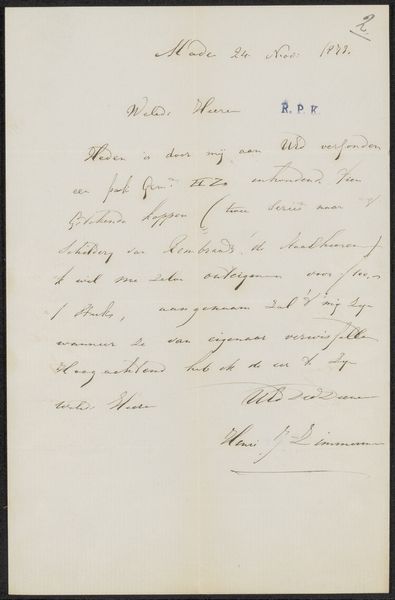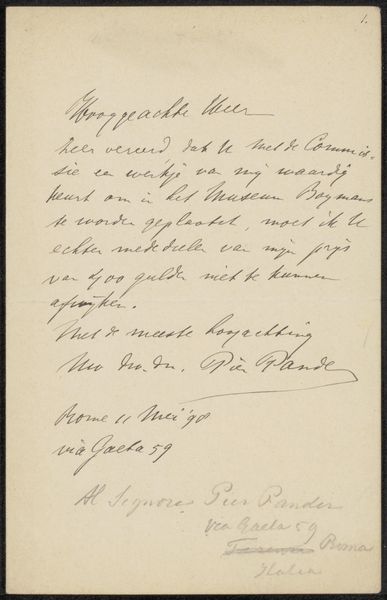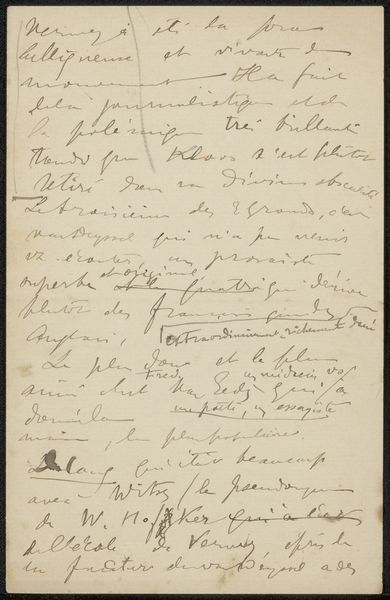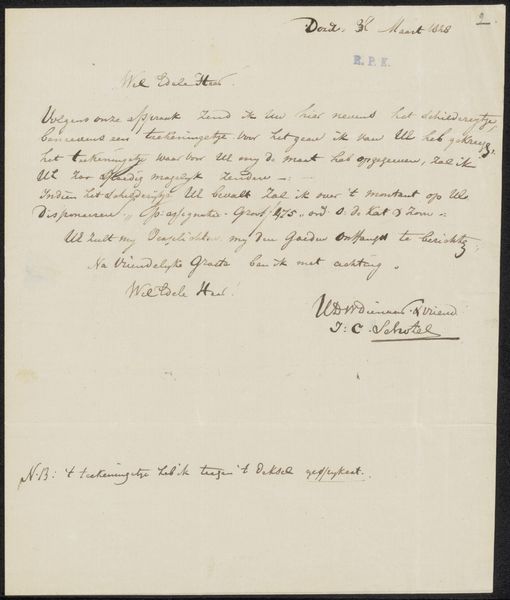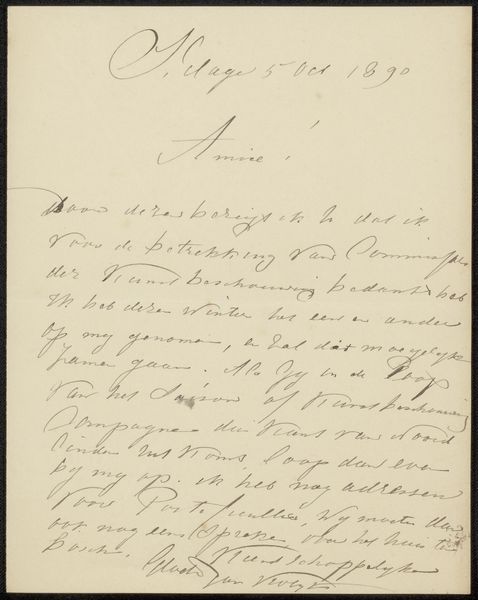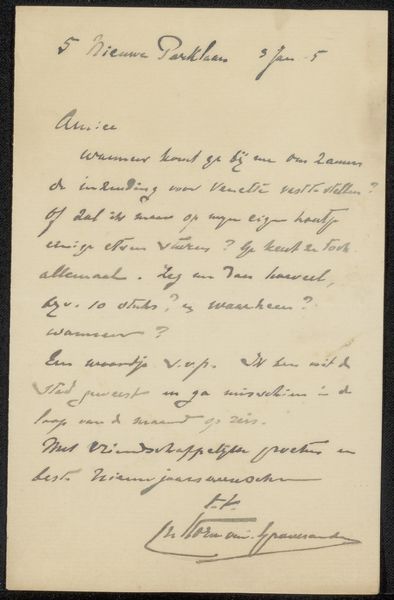
drawing, paper, ink
#
drawing
#
paper
#
ink
#
calligraphy
Copyright: Rijks Museum: Open Domain
Curator: This is a letter, titled "Brief aan Philip Zilcken," possibly from 1905, crafted by Karel Sluijterman using ink on paper. It's a window into a personal correspondence, all swirling script and delicate strokes. What catches your eye about it? Editor: Immediately, I see fragility. The paper itself seems almost translucent, and the handwriting, though elegant, conveys a certain impermanence. It whispers of bygone eras and the intimate exchange of thoughts, almost voyeuristic in its nature now. Curator: Yes, it's interesting, isn't it? It gives a glimpse into a time when communication was slower, more considered, more…artful. Look at the flow of the ink, the way the letters dance across the page, there's a rhythm to it. He is probably inviting Philip Zilcken for collaboration. I am guessing... What does it make you wonder about? Editor: I immediately wonder about the constraints within that artfulness. Whose stories were prioritized? Were the letter exchanges between Zilcken and Sluijterman equitably celebrated as 'art' in the making, or did certain voices dominate? How does gender or social position figure into it? And what happens if the narrative were not preserved or recognized? Curator: Absolutely, seeing a different time of such correspondence always make one wonder. It makes me ponder whether handwriting offers us a unique expression compared to typing. If a person can use calligraphy with as much detail as other visual mediums? Editor: It's more than just penmanship; it is also cultural currency. Skills like these often grant you access or can act as symbolic capitals that communicate power, education, and status. These handwritten letter reminds us of its historical, socioeconomic impact for many. What this kind of dialogue do for art and education. Curator: In thinking through all that, this piece has turned into a much broader reflection on communication itself. It reminds me about the importance of art history in seeing modern contexts in life. Thank you! Editor: My pleasure! To be invited to think of these forgotten narratives as sites of potential solidarity across art histories makes me hopeful for contemporary approaches.
Comments
No comments
Be the first to comment and join the conversation on the ultimate creative platform.

